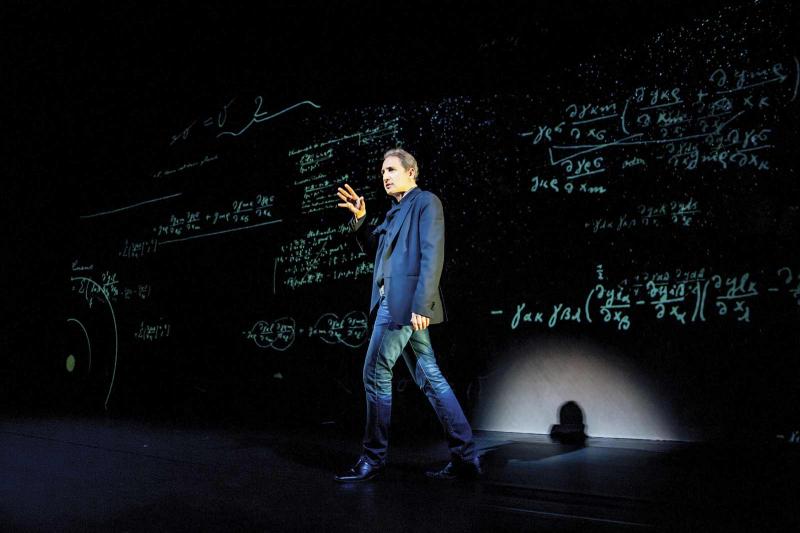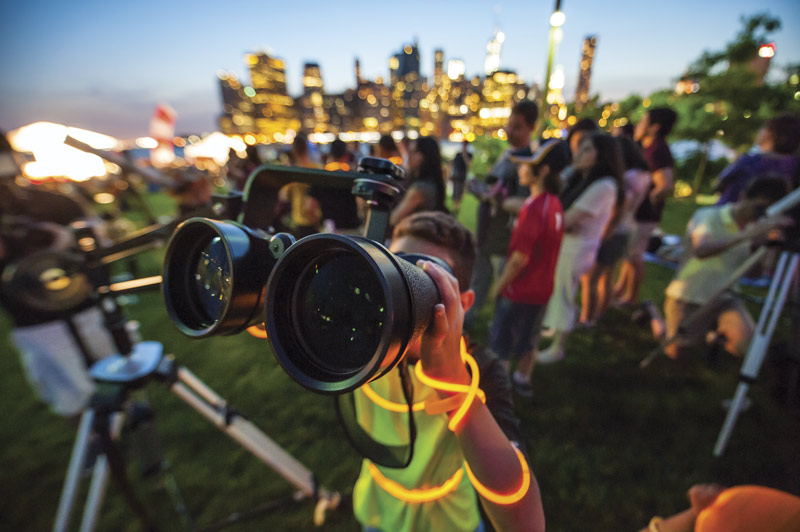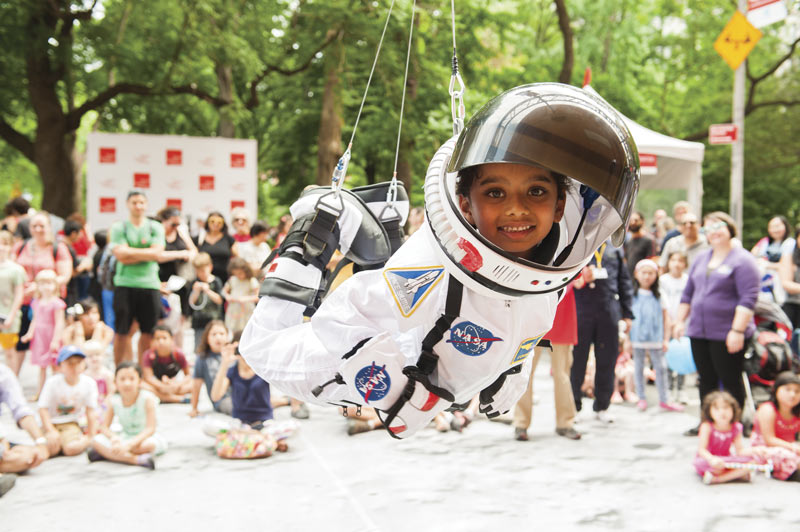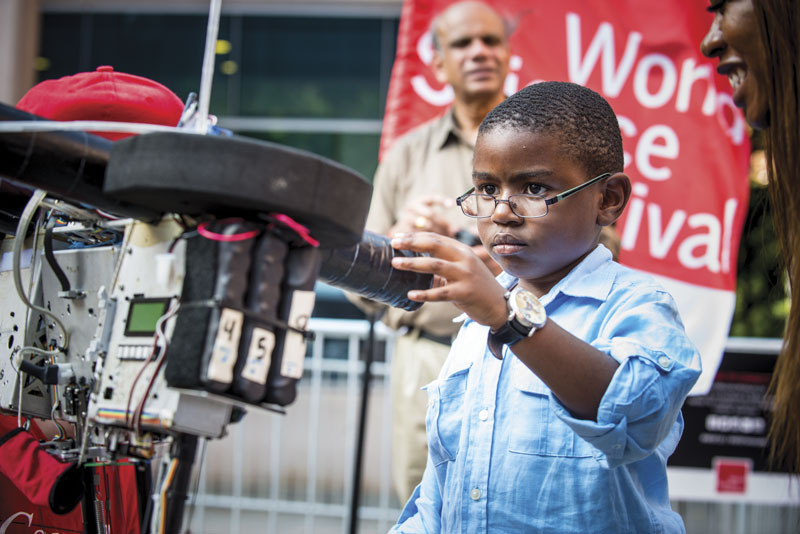Science For All: A Conversation with Dr. Brian Greene
Fall
2016
Feature
Science For All: A Conversation with Dr. Brian Greene
The genesis of the World Science Festival, a wonderland for science outreach.
By:Victoria DiTomasso, SPS Summer 2016 Intern

The World Science Festival is a wonderland for science outreach. For seven days each year, New York City is the gathering place of the great minds in science and the arts, all working to produce live and digital content that brings science out of the laboratory and into the streets, parks, museums, galleries, and performing arts venues throughout the city. Over the past nine years, it has drawn more than a million and a half visitors, with millions more viewing the programs online.
It all had to start somewhere, and if you look back to 2005, one of the festival’s cofounders and current chairman of the board of directors, Dr. Brian Greene, “had never even heard of the idea of a science festival,” he tells SPS.
In 1999, Brian Greene rose to prominence as a science communicator after publishing The Elegant Universe, his book about string theory written for a general audience. In 2005, the Italian translator of his book told him about a science festival that had taken place in Genoa, Italy. As the translator described the events that had happened all throughout the ancient town of Genoa, he thought, “If a science festival was something that could succeed in Genoa, how thrilling would it be to make a New York version of this?” To him, “it was a great challenge” and one that he eagerly took on.

He saw his vision of a science festival in New York City realized for the first time in 2008 and since then has been continuously surprised by the variety of people that enthusiastically come to its programs.
Its audiences have people from all walks of life. The festival, he says, is “recognition that science cuts across all of these boundaries and hits people at a deep place of curiosity and wonderment.”
It is by tapping into that broad appeal that Greene entices the public to learn about science.
“The best way to get someone interested in these ideas is if it’s organic, if you don’t sell them on it, don’t somehow force them,” he says.
Brief interactions—a demo, a short paragraph in a book, or even just a visual on TV—can be enough to form a connection between the learner and science.
Greene credits that connection to what he refers to as a “human hook...a metaphor, analogy, story, or historical episode.”

Once given the chance to share the science, it, too, must be presented in an accessible way. You need to “meet people at their level,” Greene instructs. He achieved this in his book, The Elegant Universe, by “describing ideas with a variety of different metaphors, at varying levels of difficulty.” Presenting the information at a variety of levels gives audience members “permission to not understand everything, which allows for a much broader appeal.”
Greene attributes his success as a communicator to being, first and foremost, a scientist. But he adds that he also sees his role as that of a translator, “keeping one foot in the actual research and another foot in the general public community, helping each to understand the other.”
Greene says he initially developed his skills as a “translator” by analyzing his own learning process. As a student, he “required mental imagery to bolster [his] mathematical understanding.” Now, when talking to the public, he can “strip away the math and use that [same mental imagery] as a basis of communication.”

His advice to undergraduate students of science is to “learn the basics of your field inside and out. Do not let anything at an early stage intrude on that foundational understanding that will serve you for a lifetime. At the same time, read popular books and articles that can help you have a larger vision of why the details of your work really matter to people. Have a feel for the big ideas and how it can inspire the public to want to further understand the intimate details of your research.”
The nitty gritty of any topic can put people off. In communicating his own work about cosmology and string theory, he makes sure to use the big, interesting questions about the origins of the universe to keep his audience curious about the details.
Undergraduates should seek out opportunities to practice these communication skills. Greene suggests acting as an “explainer” at a public program by attending the program and then explaining the science behind it to members of the audience. If this is not an option, use your school’s demonstrations department to host your own event.
Ultimately, you will need to find what works for you. It is only through practice and experience that you will find the talent you bring as a communicator, or that you will strike your own balance between research and outreach, between human hook and science communication. //

